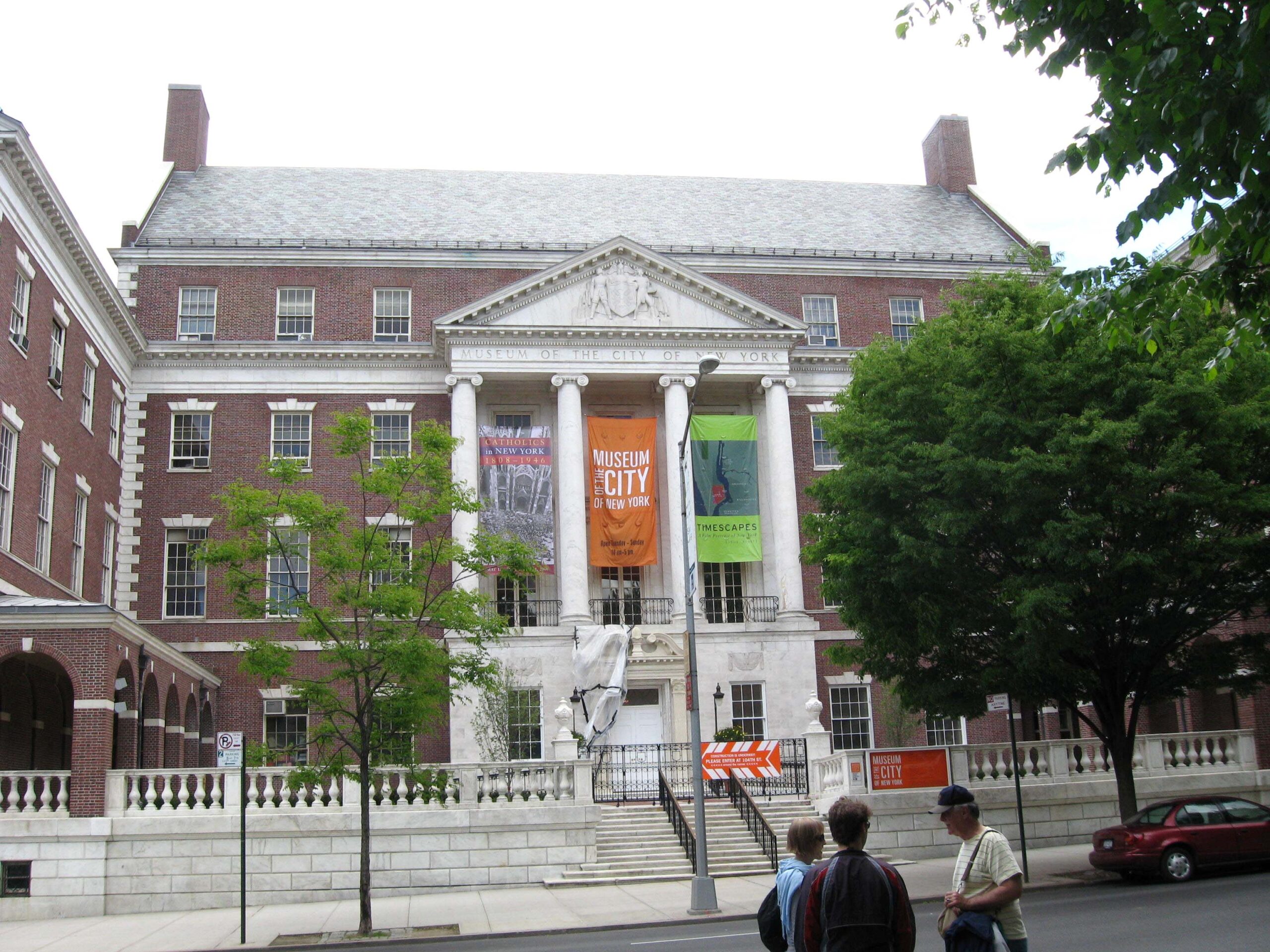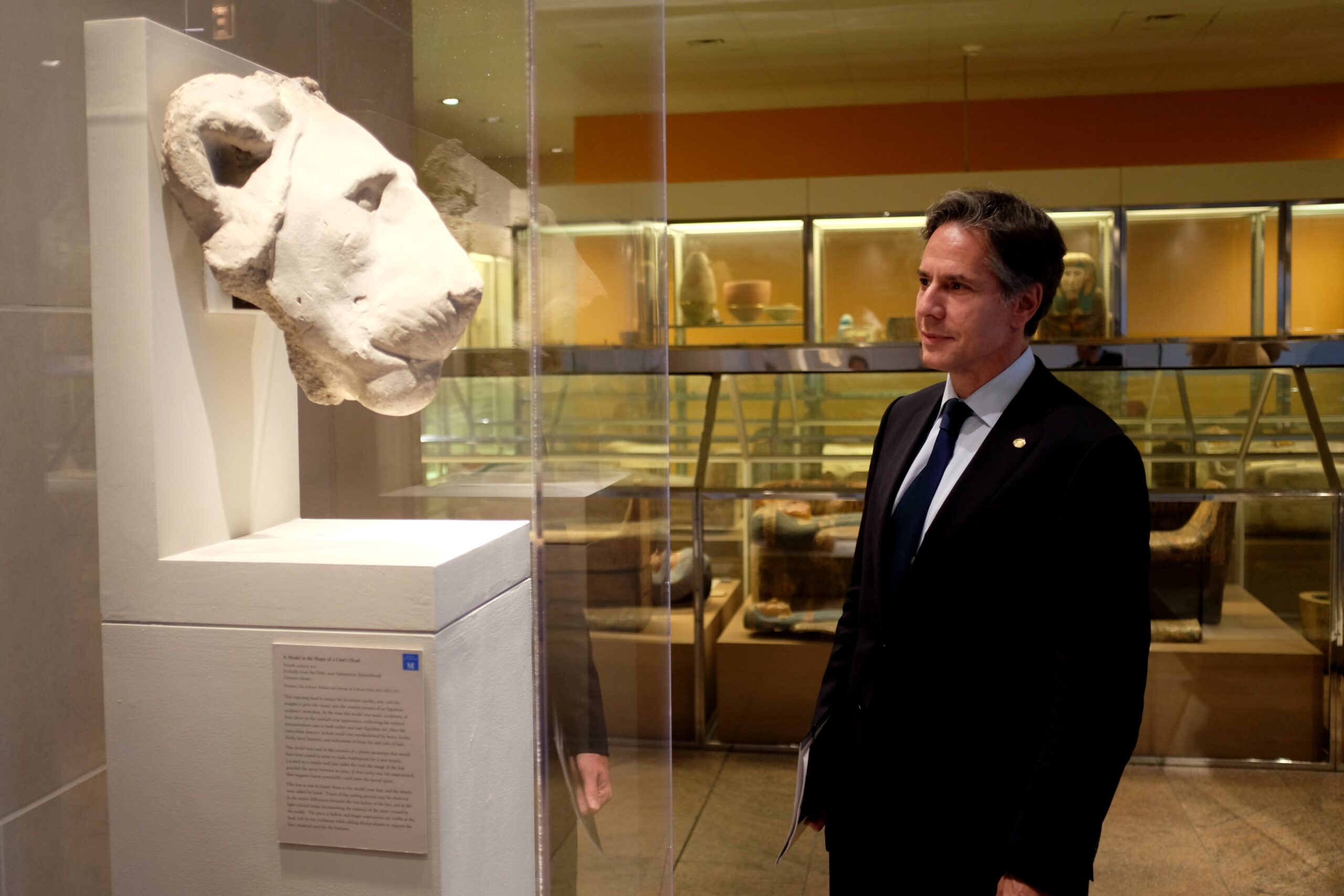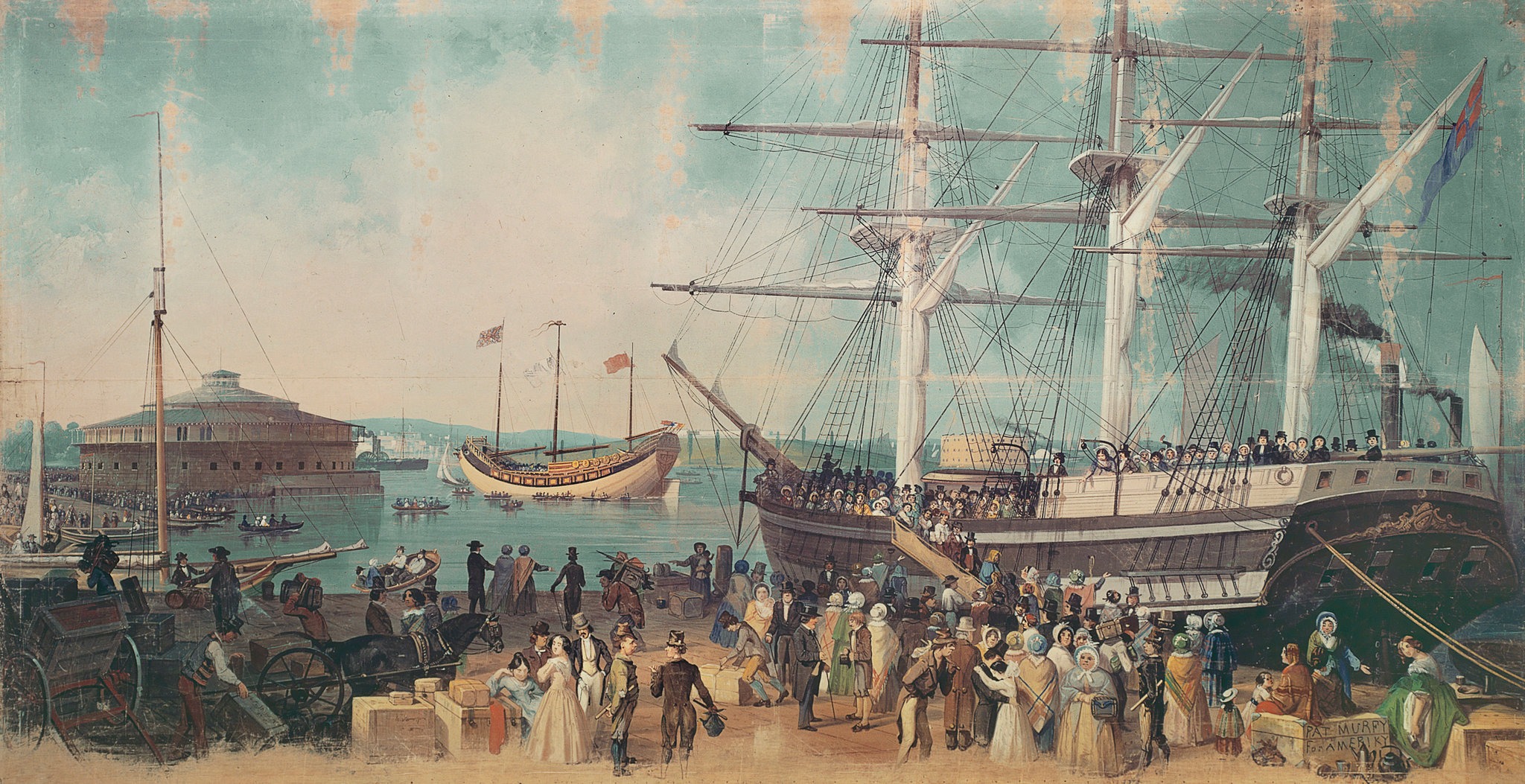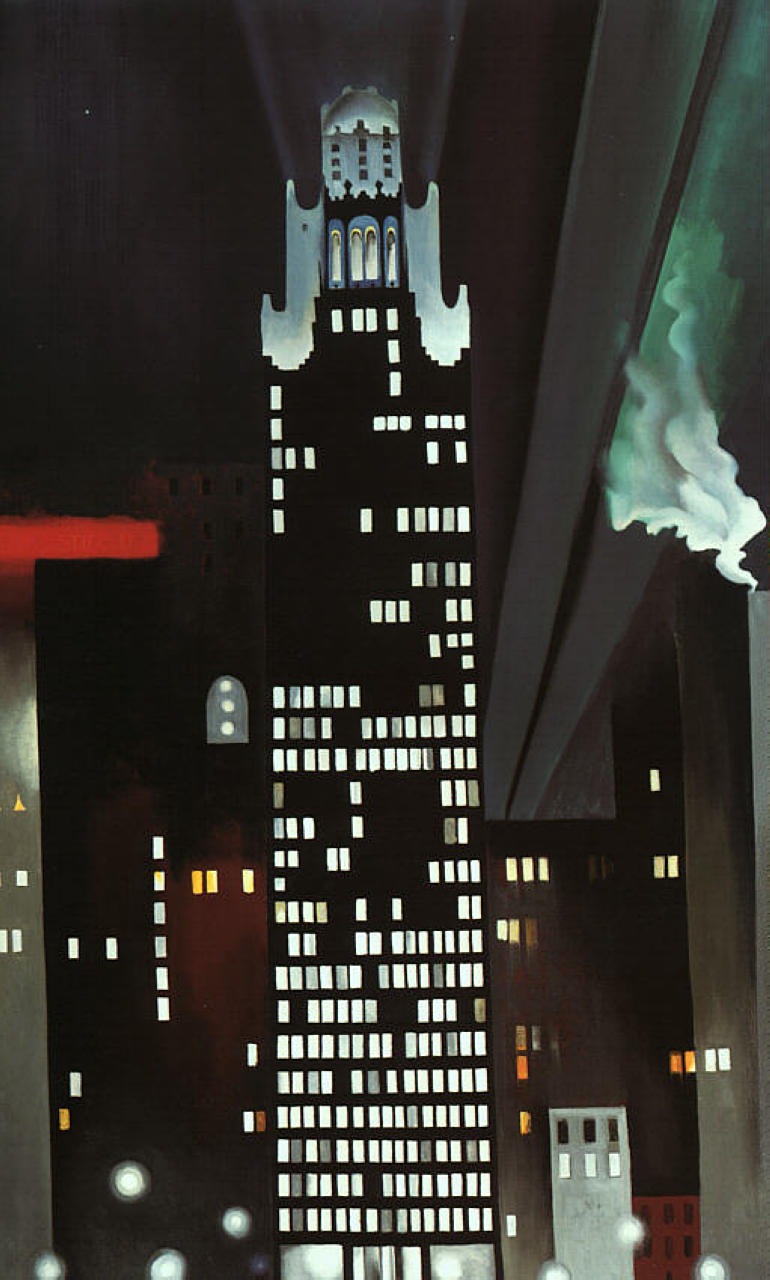New York City, the city that never sleeps, is a vibrant metropolis known for its iconic skyline, diverse population, and rich history. Situated on the eastern coast of the United States, it has long been a melting pot of cultures and ideas, a hub of innovation and creativity, and a symbol of American dreams coming to life. In the heart of this vibrant city lies The Museum of the City of New York, a cultural institution that captures the essence of this dynamic and ever-evolving city.
The Museum’s History
Founded in 1923, by Henry Collins Brown, a historian and writer, the museum was created with the vision of preserving and sharing the history and culture of New York City with the world. The Museum of the City of New York, often abbreviated as MCNY, is a treasure trove of history, art, and culture dedicated to preserving and showcasing the unique story of New York City. With a rich collection spanning over four centuries, the museum takes visitors on a journey through the city’s past, present, and future, shedding light on the diverse people, places, and events that have shaped this iconic urban landscape.
The museum’s original location was Gracie Mansion, which served as its home until 1932 when it moved to its current site in East Harlem. Designed by renowned architect Joseph H. Freedlander, the building itself is a work of art, combining Georgian and Colonial Revival architectural styles. This historical structure has been a vital part of the museum’s identity, offering visitors a sense of the city’s architectural heritage from the moment they step through the doors.
The museum’s mission is to explore and celebrate the history, diversity, and creativity of New York City while fostering a deeper understanding and appreciation of the city’s unique character. Through its extensive exhibitions, educational programs, and community outreach efforts, MCNY has become a vital resource for both locals and tourists looking to connect with the city’s rich heritage.
The Museum’s Location and Architecture
Before we delve into the museum’s exhibits and collections, let’s first take a moment to appreciate its physical presence within the city. Situated on Fifth Avenue at the northern end of Museum Mile, MCNY finds itself in the heart of Manhattan’s Upper East Side. The museum’s neo-Georgian building, designed by Joseph H. Freedlander, is an architectural gem in its own right, with its elegant façade and stately columns providing a fitting backdrop for the treasures contained within.
Visitors are greeted by a grand entrance and a beautiful rotunda, which sets the stage for the immersive experience that awaits them inside. The museum’s interiors are as inviting as they are informative, with spacious galleries that house a wide range of exhibitions and displays. The architectural design of the building seamlessly complements the museum’s mission, offering a sense of historical continuity while also embracing the contemporary spirit of New York City.
A Glimpse into the Museum of the City of New York
The Museum of the City of New York focuses on preserving and presenting the history and heritage of the city. Its collection includes a wide range of items that showcase the city’s evolution over the years. While the specific items on display may change over time, here are some of the major categories and highlights you can typically find at the museum:
- Art and Paintings: The museum features a collection of paintings, drawings, and sculptures that depict various aspects of New York City’s history, including portraits of influential figures, scenes of daily life, and iconic landmarks.
- Photographs: A vast collection of historical photographs spanning from the 19th century to the present day, capturing moments in the city’s history, including famous events, neighborhoods, and people.
- Costumes and Fashion: An assortment of clothing and fashion items that reflect the city’s style and fashion trends throughout the decades.
- Manuscripts and Documents: Important documents, letters, manuscripts, and records that provide insights into the city’s political, social, and cultural history.
- Furniture and Decorative Arts: Period furniture and decorative arts from various eras in New York City’s history, showcasing the changing tastes and design trends of the city’s residents.
- Toys and Games: A collection of toys, games, and memorabilia from different time periods, offering a glimpse into the leisure and entertainment activities of New Yorkers.
- Architectural Models: Models and architectural plans that illustrate the city’s architectural evolution and iconic buildings.
- Maps and Cartography: Historical maps and cartographic materials that document the growth and development of the city’s neighborhoods and infrastructure.
- Transportation Artifacts: Items related to transportation in the city, including vintage subway cars, trolley cars, and other public transportation memorabilia.
- New York City Memorabilia: A variety of artifacts, souvenirs, and promotional materials related to the city, including items from World’s Fairs held in New York.
- Exhibitions: The museum regularly hosts temporary exhibitions on various themes related to New York City’s history, culture, and contemporary issues.
Artworks
While the specific artworks on display may change with rotating exhibitions, here are some famous art and paintings that have been featured in the museum’s collection in the past:
- “View of New York Harbor” by Samuel Waugh: This painting from the mid-19th century provides a panoramic view of New York Harbor and the city’s skyline, capturing a historic moment in the city’s development.
- “Washington Square” by John Sloan: This early 20th-century painting depicts the iconic Washington Square Park in Greenwich Village, showcasing the park’s vibrant atmosphere and people.
- “The Eighth Wonder” by Frederick C. Havemeyer: This painting captures the construction of the Brooklyn Bridge in the late 19th century, one of New York City’s most iconic landmarks.
- “New York City at Night” by Georgia O’Keeffe: Created in the 1920s, this artwork by the famous American artist Georgia O’Keeffe offers a unique and abstract representation of the city’s nighttime skyline.
- “Lower Manhattan” by Berenice Abbott: This photograph from the early 20th century is part of Abbott’s “Changing New York” series, documenting the architectural and social changes in the city.
- “The Potato Eaters” by Alice Neel: This painting by Neel, a renowned portrait artist, depicts a group of residents from Spanish Harlem, offering a glimpse into the diversity and everyday life of New Yorkers.
- “Harlem Street Scene” by Norman Rockwell: Created by the celebrated American artist Norman Rockwell, this painting showcases a Harlem street scene, capturing the neighborhood’s energy and character.
- “Rush Hour” by George Wesley Bellows: This painting from the early 20th century portrays the bustling streets of New York City during rush hour, emphasizing the city’s dynamism.
- “Skating in Central Park” by Agnes Tait: This charming painting captures the joy of ice skating in Central Park during the winter months, highlighting a beloved seasonal activity in the city.
The Collections
One of MCNY’s greatest assets is its extensive collection of artifacts, photographs, documents, and artworks, which collectively paint a vivid portrait of New York City’s history. The museum’s collections are organized into several categories, each focusing on different aspects of the city’s past and present.
- The Early Days of New Amsterdam: MCNY begins its historical journey with a glimpse into the city’s early days when it was known as New Amsterdam, a Dutch trading post. Visitors can explore artifacts from this era, such as colonial-era documents, maps, and personal items, shedding light on the challenges and triumphs of the city’s early settlers.
- The Revolutionary City: As the American Revolution swept through the colonies, New York City played a pivotal role. MCNY’s collection includes Revolutionary War-era artifacts, including weaponry, clothing, and letters that reveal the city’s strategic importance during this tumultuous period in American history.
- Immigration and Diversity: One of the most striking aspects of New York City is its cultural diversity, and MCNY celebrates this diversity with an expansive collection dedicated to immigration and the various communities that have shaped the city. Photographs, oral histories, and personal objects provide a window into the experiences of immigrants who came to the city seeking a better life.
- Gilded Age and the Roaring Twenties: The late 19th and early 20th centuries were a time of immense growth and prosperity for New York City. The museum’s collection of artifacts and memorabilia from this period reflects the opulence and innovation of the Gilded Age and the vibrant energy of the Roaring Twenties.
- The Great Depression and World War II: The city’s resilience and fortitude during times of hardship are showcased through a collection that delves into the Great Depression and World War II. Photographs, posters, and personal stories illuminate the challenges faced by New Yorkers during these tumultuous years.
- The Post-War Boom and Modern NYC: The second half of the 20th century saw New York City emerge as a global cultural and economic powerhouse. MCNY’s collection includes artifacts and artwork that capture the city’s transformation into a modern metropolis.
- Contemporary New York: The museum’s dedication to preserving the city’s history extends to the present day. Visitors can explore contemporary New York through exhibitions that touch on topics such as urban development, social issues, and the city’s ongoing cultural evolution.
- Art and Culture: New York City has long been a hub for artists, writers, musicians, and performers. MCNY’s art and culture collection features works by notable New York artists and explores the role of the city in shaping the cultural landscape of the United States.
- Fashion and Style: New York is synonymous with fashion and style, and the museum’s fashion collection showcases the city’s influence on the world of haute couture and street fashion. Iconic garments, accessories, and fashion photography offer a glimpse into the city’s sartorial history.
- Photographic Archives: One of MCNY’s crown jewels is its extensive photographic archive, which contains over a million images documenting the city’s history. From iconic skyscrapers to everyday street scenes, these photographs serve as a visual time capsule, capturing the essence of New York City over the years.
The museum’s commitment to preserving and presenting these collections is a testament to its dedication to telling the story of New York City in all its complexity and diversity. The artifacts, documents, and artworks on display serve as a bridge between the past and the present, allowing visitors to connect with the city’s history on a personal level.
Exhibitions
In addition to its permanent collections, MCNY regularly hosts a wide range of temporary exhibitions that delve deeper into specific themes and aspects of New York City’s history and culture. These exhibitions are carefully curated to provide fresh insights and perspectives, ensuring that visitors always have something new and exciting to explore.
Some notable exhibitions from recent years include:
- New York at Its Core: This groundbreaking exhibition takes visitors on a journey through the city’s history from its earliest days to the present. Divided into three galleries—New Amsterdam, World City, and Future City—it explores key moments and themes that have shaped the city’s identity.
- Activist New York: Focusing on the city’s role as a center of social and political activism, this exhibition examines the history of protest, reform, and advocacy in New York City. It showcases artifacts, photographs, and multimedia presentations highlighting the impact of grassroots movements and activists.
- Germ City: Microbes and the Metropolis: Delving into the history of public health and disease control in New York City, this exhibition explores how the city has responded to outbreaks and epidemics throughout its history. It’s a timely reminder of the city’s resilience in the face of health challenges.
- City/Game: Basketball in New York: Celebrating the deep-rooted connection between basketball and New York City, this exhibition examines the sport’s evolution in the city and its cultural significance. It features memorabilia, photographs, and stories of legendary players who emerged from the city’s courts.
- New York, New Music: 1980-1986: Focusing on the vibrant music scene of the 1980s, this exhibition explores the birth of hip-hop, punk, and new wave in New York City. It showcases artifacts and performances that highlight the city’s pivotal role in shaping contemporary music.
These exhibitions not only provide valuable insights into the city’s history but also encourage visitors to engage with New York’s cultural heritage on a deeper level. Whether you’re interested in politics, health, sports, music, or any other facet of the city’s identity, there’s likely an exhibition at MCNY that will capture your imagination.
Educational Programs and Community Engagement
The Museum of the City of New York is not just a repository of artifacts and exhibitions; it is also a hub for learning and community engagement. The museum offers a wide range of educational programs and initiatives designed to foster a deeper understanding of the city’s history and culture.
- School Programs: MCNY welcomes students from across the city and beyond, offering tailored programs and tours that align with the school curriculum. These educational experiences allow students to connect classroom learning with real-world history and culture.
- Teacher Professional Development: The museum also provides professional development opportunities for educators, equipping them with the tools and resources to teach New York City’s history effectively.
- Public Programs: MCNY hosts a diverse array of public programs, including lectures, panel discussions, film screenings, and workshops. These events allow visitors to engage with experts and scholars and gain new perspectives on the city’s history and contemporary issues.
- Family Programs: Families are encouraged to explore the museum together through family-friendly workshops, storytelling sessions, and interactive exhibits that cater to all age groups.
- Community Engagement: MCNY actively reaches out to the diverse communities of New York City, collaborating with local organizations and hosting events that celebrate the city’s multicultural heritage.
- Digital Initiatives: In an increasingly digital world, the museum has embraced technology to bring its collections and exhibitions to a global audience. Virtual tours, online exhibitions, and educational resources are readily accessible for those unable to visit in person.
These educational programs and community engagement initiatives make MCNY a vibrant and inclusive institution that serves as a valuable resource for New Yorkers and visitors alike. They also reflect the museum’s commitment to ensuring that the city’s history and culture are accessible to everyone.
Preserving New York City’s Cultural Legacy
Preserving and showcasing the cultural legacy of a city as dynamic and ever-changing as New York is no small feat. The Museum of the City of New York rises to this challenge with unwavering dedication, supported by a team of curators, historians, educators, and passionate individuals who share a deep love for the city.
The preservation of historical artifacts and documents requires meticulous care and expertise. The museum’s conservation efforts ensure that these treasures are protected for future generations. If you want to learn more about preserving historical buildings and heritage, you may read our post about architectural conservation and restoration. Additionally, the museum actively seeks out new acquisitions and donations that enhance its collections and fill gaps in the historical record.
One such example is the acquisition of the photography archive of Bill Cunningham, the legendary New York Times fashion photographer. This valuable collection documents decades of New York City street style and high-society events, offering a unique perspective on the city’s fashion history.
In recent years, MCNY has also embarked on ambitious digitization projects, making its vast collections more accessible to researchers, scholars, and the general public. This commitment to digitization ensures that the museum’s treasures can be explored and enjoyed by a global audience.
The Impact of The Museum of the City of New York
The Museum of the City of New York is more than just a repository of historical artifacts; it is a cultural institution that plays a vital role in shaping the city’s identity and fostering a sense of community. Its impact extends far beyond the walls of its stately building.
- Cultural Enrichment: MCNY enriches the cultural life of New York City by providing a platform for artists, historians, scholars, and activists to engage with the city’s history and contemporary issues. Through its exhibitions and programs, the museum encourages dialogue and critical thinking.
- Education: The museum’s educational programs and resources empower educators to bring the city’s history into the classroom, inspiring the next generation of New Yorkers to connect with their heritage.
- Community Engagement: MCNY actively engages with the city’s diverse communities, ensuring that their voices and stories are represented and celebrated. The museum’s commitment to inclusivity and diversity is evident in its programming and outreach efforts.
- Tourism: For visitors to New York City, MCNY offers a unique opportunity to delve into the city’s history and culture, enriching their travel experience and deepening their understanding of the Big Apple.
- Research and Scholarship: The museum’s collections are a valuable resource for researchers and scholars who seek to explore the history and culture of New York City. It contributes to the academic community by providing access to primary source materials and fostering scholarly inquiry.
- Inspiration: MCNY serves as a source of inspiration for artists, writers, and creators who draw upon the city’s rich history and vibrant culture in their work. It sparks the imaginations of those who seek to capture the essence of New York in their artistic endeavors.
As an institution that is deeply embedded in the fabric of New York City, MCNY has a profound and lasting impact on the city’s cultural landscape. Its dedication to preserving and celebrating the city’s history and culture ensures that the stories of New York and its people will continue to be told and appreciated for generations to come.
Conclusion
The Museum of the City of New York is not merely a repository of artifacts and historical documents; it is a living testament to the vibrancy and resilience of New York City itself. With its rich and diverse collections, thought-provoking exhibitions, and extensive educational programs, MCNY stands as a cultural beacon, inviting visitors to embark on a captivating journey through the history and culture of the Big Apple.
Through its commitment to preserving the past and engaging with the present, the museum plays a pivotal role in shaping the identity of New York City and its residents. It is a place where history comes alive, where the voices of generations past continue to resonate, and where the spirit of innovation and creativity that defines the city is celebrated.
The Museum of the City of New York reminds us that behind the iconic skyline and bustling streets lies a story of struggle, triumph, diversity, and progress. It encapsulates the essence of New York City, a city that has always been a melting pot of cultures and ideas, a place where dreams are pursued, and where the pursuit of excellence is part of the city’s DNA.
As we navigate the ever-changing landscape of the 21st century, institutions like MCNY serve as pillars of cultural preservation and enlightenment. They remind us of the importance of understanding our past, celebrating our present, and shaping our future. The museum invites us to explore, learn, and connect with the city’s rich heritage, ensuring that the vibrant tapestry of New York City’s history and culture continues to thrive for generations to come.




